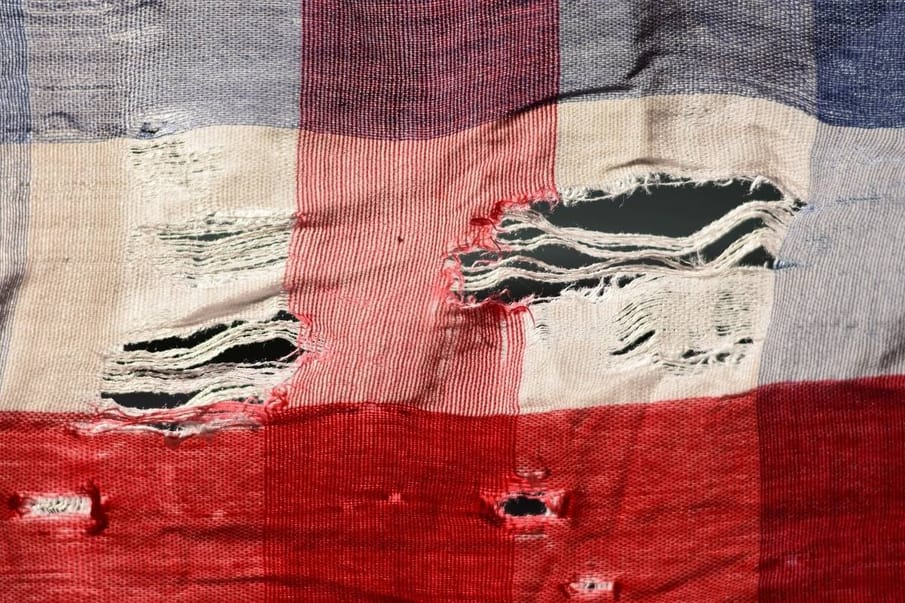When you pull at the threads of clothing ‘take-back’ schemes, all may not be as it seems. We explore what happens when textiles reach the end of their life, and the environmental consequences of their disposal
There are many ways to get more life out of your textiles. Whether it’s carefully stitching a fraying hem on your favourite trousers, or chopping up old towels to be used as cleaning cloths, the ‘make do and mend’ approach is more popular than ever. In fact, a consumer report by Deloitte found that 56% of UK adults chose to fix or repair a product rather than replacing it in the past year.
While repairing, upcycling, and downcycling are great for minimising excess waste, the reality is that isn’t always an indefinite option. So, what happens when your textiles have nothing left to give?
Where does textile waste go?
According to UK charity WRAP, less than 1% of textiles are recycled globally. That’s 99% of clothing, bedding, and fabric simply thrown away, and when textiles like these end up in landfill, they can take decades, or even centuries, to decompose. Take a polyester jacket, for example, which could sit in the ground for up to 200 years, slowly releasing microplastics into the soil and waterways as it breaks down. Even natural fibres have environmental consequences, as they release harmful greenhouse gases as they perish.
The alternative to landfill is incineration, which might seem like a cleaner solution on the surface, but, in reality, releases carbon dioxide and can emit toxic chemicals into the atmosphere, depending on the fabric composition. It’s seen as the lesser of two evils in terms of waste disposal, because it can convert waste into energy that is sent back to the grid. But a five-year analysis by the BBC, released in 2024, reported that energy-from-waste plants are now producing the same amount of greenhouse gases per unit of electricity as if they were burning coal – which is known as the world’s ‘dirtiest fossil fuel’.
Studies estimate that around 95% of discarded textiles could be reused or recycled in some form, so there’s definitely an incentive to put more effort into this – but, sometimes, truly irreparable items have to go somewhere. So what are your options?
Charity shops
Handing over your textiles to charity isn’t necessarily as environmentally friendly as you might think. Because of the fast fashion industry, where items are worn a handful of times before trends move on, or the item breaks due to cheap manufacturing, charity shops are being inundated with items that no one wants to buy.
In the past, textiles were valuable items to charity shops. They would be collected by rag merchants who would buy them by weight and sell them on to be downcycled into things like stuffing, blankets, and cloths. Now, instead of making money on these unsellable items, charities are having to spend money to dispose of them. For this reason, it’s best to check with your local charity shop before donating any end-of-life textiles.

What’s the deal with ‘take-back’ initiatives?
You may have heard of the many ‘take-back’ schemes offered by high street retailers such as H&M, M&S, and Zara. The idea is that, to avoid sending your textiles to landfill, you take them into your local store and they will give them a second life.
But investigations have found a lack of transparency around what actually happens to such items. A 2024 report by Remake, a sustainable fashion action group, tracked 21 garments through these take-back programmes, and revealed alarming gaps between marketing promises and reality.
Many items were destroyed or downcycled despite being in good condition, others were shipped to Africa where 20–50% became waste, and several were left in warehouses for months. The report also found that many retailers rewarded customers with vouchers to spend in store, perpetuating the harmful fast fashion model.
But don’t worry, there are other avenues to pursue in order to ensure your textiles don’t go to landfill unless absolutely necessary.
-
Check local council websites: Many local authorities now offer dedicated textile recycling bins or collection services. These are often managed by organisations with transparent recycling processes, unlike some retail take-back schemes.
-
Specialist recyclers: Look for textile recycling companies that specialise in fibre-to-fibre recycling, where old fabrics are transformed into new materials.
-
Community initiatives: Ask in your local repair cafés, textile banks, and community groups in case they are looking for items to be reused as rags, stuffing, or creative projects.
-
Alternative take-back schemes: If using retailer programmes, research which companies demonstrate genuine transparency about their recycling processes and outcomes. Check out Reskinned (reskinned.clothing) as it has a zero landfill policy, and guarantees that all clothes are resold, repurposed, or recycled.
While the current textile waste situation is concerning, change is on the horizon. A study by fashion industry data company WEFT found that almost three-quarters of the general public would accept 50p additional cost on clothing to support recycling infrastructure, proving that there is appetite within consumer spaces for more effective recycling options.
When you follow the threads of truth, there are responsible disposal options for your much-loved clothing, while others unravel. By putting some extra effort into researching your choices, you can uncover trustworthy, and more effective, routes that avoid simply binning your much-loved clothing, to ensure you’re diverting items from landfill – as they say, a stitch in time saves nine.


Comments